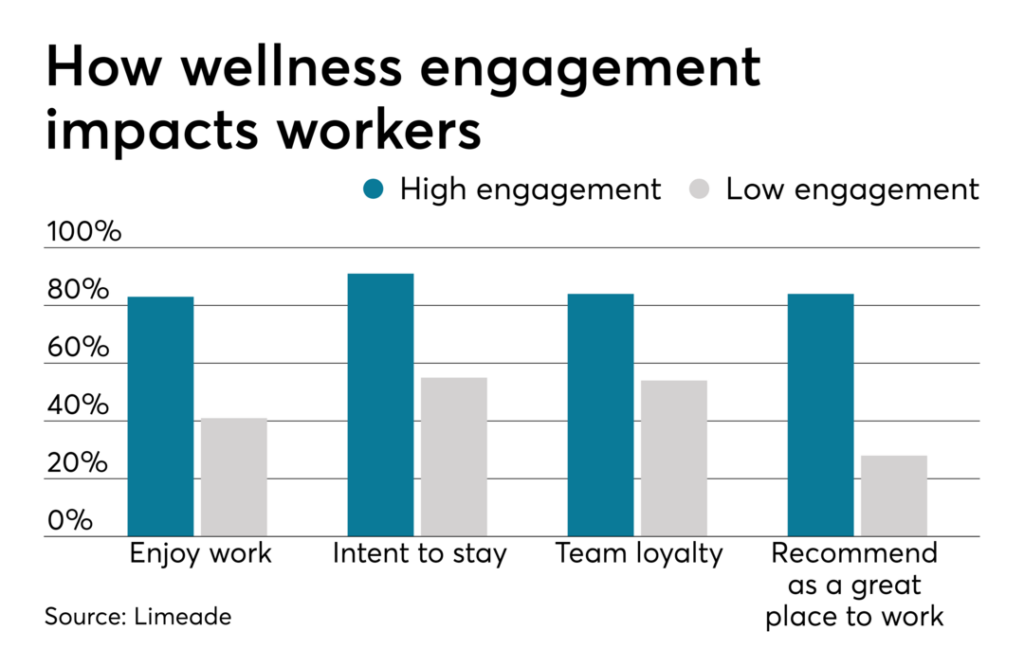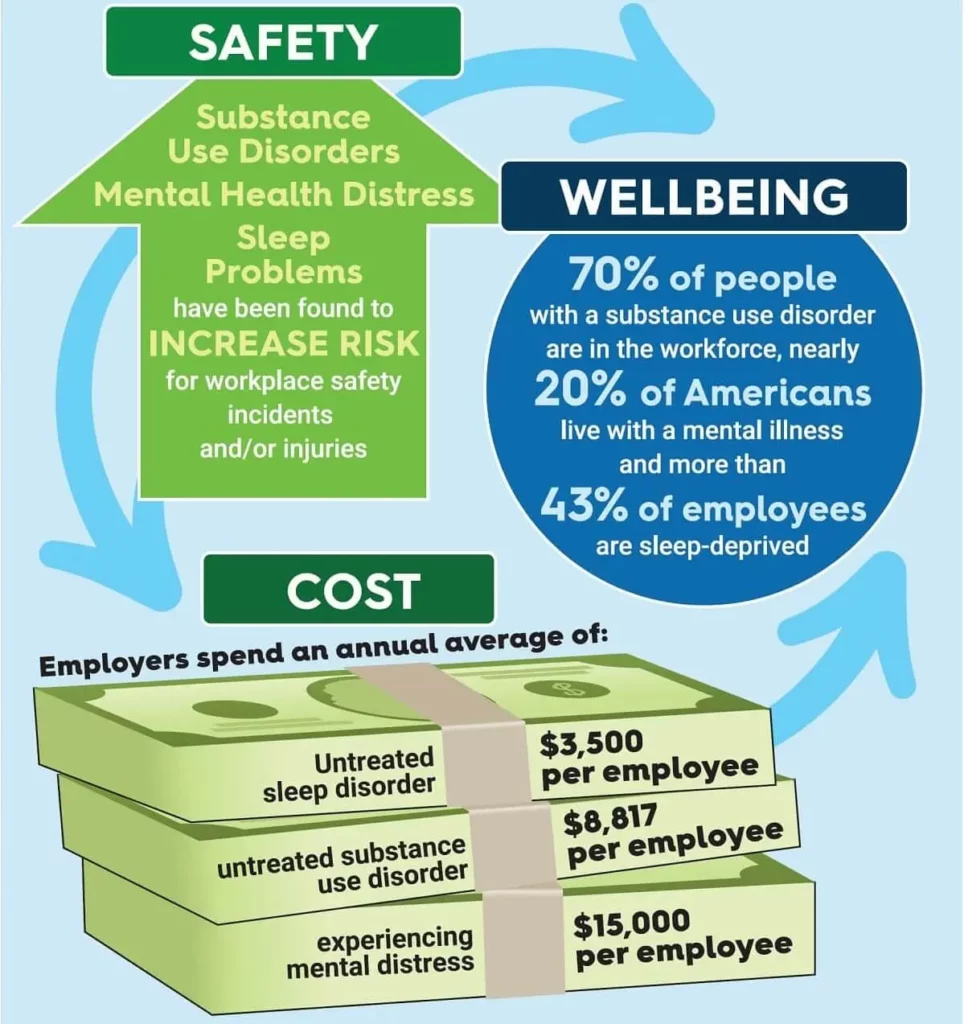With 91% of workers reporting that stress affects their quality of work and personal life, it’s no wonder that more companies are turning to employee health programs.
But these programs can be costly, leaving many people wondering: Is the investment truly worth it?
The answer lies in understanding the ROI on employee health and wellness programs.
In this blog, we’ll explore the benefits of these initiatives, break down their ROI, and discuss the different types of programs available, along with some strategies for measuring their success.
The Benefits of Employee Health and Wellness Programs
Employee health programs aren’t just nice-to-have; they’re a game changer, especially in high-risk industries. These programs do more than just improve employee well-being—they directly impact your bottom line.
Whether it’s boosting productivity, reducing absenteeism, or enhancing your company’s reputation, the benefits of workplace wellness programs are numerous.
Let’s break them down:
1. Boosting Employee Engagement and Productivity
A healthier workforce is a more engaged and productive one. That’s because when workers feel supported in their health, they’re more likely to be present, focused, and productive on the job. This is especially important in industries where physical health is closely tied to job performance, such as construction or manufacturing.
Additionally, by integrating healthcare initiatives with workplace injury management, you can ensure your team is not only engaged but also physically capable of delivering their best work.
2. Reducing Absenteeism and Turnover
High absenteeism and turnover rates can cripple a business, leading to increased costs and disrupted workflows.
According to CDC, healthcare programs can improve employee health, which can lead to fewer sick days and better employee retention. For those in high-risk industries, where the physical demands of the job can lead to frequent injuries, offering comprehensive injured worker care and return-to-work programs can make a huge difference. Moreover, employee health programs prioritize workers’ well-being, which in turn strengthens their loyalty.
3. Enhancing Company Reputation and Employer Branding
The benefits of health and wellness programs for employers include a boost in the company’s reputation.
By emphasizing employee wellness as part of your company values, you can easily stand out from other competitors in your industry.
Additionally, top talent is usually looking for more than just a paycheck—they want to work for companies that value their well-being. So, if you position your company as a leader in employee care, you can attract the best candidates and cut down on recruitment costs.
4. Financial Benefits for Employers
All the above-mentioned benefits lead to lower healthcare costs, improved employee performance, and reduced hiring expenses, which ultimately improves your bottom line.
When you consider the ROI on employee health programs, the numbers speak for themselves: investing in your team’s health is one of the smartest business decisions you can make.

Types of Employee Health Programs
Employee health programs come in many shapes and sizes, each designed to address different aspects of well-being.
Let’s take a closer look at the 4 main types of such programs and how they can benefit both your employees and your business.
Physical Wellness Programs
Physical wellness programs focus on improving physical health through activities like fitness challenges, nutrition workshops, and regular health screenings.
For high-risk industries, where physical demands are high, these programs are crucial. Additionally, programs that focus on injury prevention and early intervention lead to $1.47 ROI for every dollar spent, proving to be a great investment that reduces workplace injuries and related costs.
Mental and Emotional Wellness Programs
Mental and emotional health is just as important as physical health.
Programs that support mental well-being can be of great value, especially in high-pressure industries (like construction and mining) where stress and burnout are common.
For example, did you know that 83% of construction workers have experienced a mental health issue? That’s why addressing construction industry mental health through targeted programs can really help build a more resilient and focused workforce.
Financial Wellness Programs
52% of workers report experiencing financial stress, which is a leading cause of anxiety.
Financial wellness programs provide support in areas like budgeting, debt management, and retirement planning, helping employees achieve financial stability. These programs are particularly beneficial in industries where financial literacy may vary widely among workers.
Also, when employees are less worried about their finances, they are more focused and productive at work.
Social and Community Wellness Programs
Humans are social creatures, and fostering a sense of community at work can do wonders for employee satisfaction.
Social and community wellness programs encourage interaction and involvement, whether through team-building activities, volunteer opportunities, or social events. These initiatives not only strengthen bonds among coworkers but also create a more supportive work environment.
In high-risk industries, where teamwork is critical, building strong social connections can improve collaboration and even reduce workplace stress.

The ROI for Employee Health Programs and How to Calculate it
When it comes to understanding the true impact of employee health programs, calculating the ROI is key.
But how to measure ROI on health and wellness programs?
The basic formula for wellness program ROI is straightforward:
ROI = (Benefits – Costs) / Costs x 100
The final number is a percentage that shows how much return you’re getting for every dollar spent on your wellness programs.
But to get a full picture of success, it’s important to also consider the VOI—Value on Investment. VOI goes beyond just financial returns, capturing both the tangible and intangible benefits, like improved employee morale and a healthier workplace culture.
Employee Satisfaction Score
One of the key indicators of a successful employee health program is employee satisfaction. When employees are happy with their work environment and the wellness initiatives available to them, it often leads to higher productivity, lower turnover rates, and a reduction in DART (Days Away, Restricted, or Transferred) cases.
How to measure: Regularly conduct surveys to gauge employee perceptions of the health and wellness programs, their impact on work-life balance, and overall satisfaction with the company’s efforts. If employees report high satisfaction, this means your health and wellness programs are making a positive difference.
Health Risk Score
The Health Risk Score tracks the overall health risk level of your workforce. A declining Health Risk Score indicates that your health programs are effective in improving employee health, reducing the prevalence of issues like high blood pressure, obesity, and other health risks.
Additionally, such programs can reduce the likelihood of incidents, which in turn lowers OSHA recordables and help you stay OSHA-compliant.
How to measure: Use Health Risk Assessments to evaluate and monitor changes in employee health over time. This can help you refine your wellness initiatives to target the areas where they’re most needed.
Productivity Rate
Increased productivity is one of the most sought-after benefits of wellness programs. When employees are healthy and feel supported, they tend to be more motivated and efficient in their work.
How to measure: Track project completion times, the quality of work, and overall employee output. An upward trend in these areas suggests that your wellness initiatives are paying off in terms of a more productive workforce.
Healthcare Cost Savings
Another major perk of effective health and wellness programs is the reduction in healthcare costs (including workers’ compensation claim costs, employee’s health insurance cost, claims, fines, and settlements insurance, claims, fines, and settlements). When employees are healthier, there’s less need for expensive medical treatments, which can lead to significant savings for the company.
How to measure: Analyze healthcare claims and expenses before and after implementing your wellness programs. Look specifically at the cost of workplace injuries to see if your initiatives are reducing incidents and related costs.
Mental Health Index
The Mental Health Index measures the well-being and stress levels of your employees. Improvements in this index reflect the success of your wellness programs in supporting mental health (especially in high-fatality industries like construction).
How to measure: Track the usage of mental health resources, monitor stress-related absenteeism, and assess any productivity issues linked to mental health. If your programs are working, you should see fewer of these problems and an overall improvement in mental well-being.
Conclusion: Why Employee Health is Worth the Investment
Employee health programs are more than just a perk—they’re a smart investment that yields measurable benefits for both employees and employers. By improving employee health and reducing costs, these programs offer a win-win for everyone involved.
If you’re a manager or HR professional in a high-risk industry like construction or energy, now is the time to consider implementing or enhancing your healthcare initiatives and focus on tracking wellness program ROI to ensure they continue to deliver value.
At JobsSiteCare, we specialize in helping businesses develop and manage health programs tailored to their unique needs. Explore our main services or take the risk assessment quiz to see how we can support your team’s health and your business’s success.
Frequently Asked Questions
Below, we’ve answered some key questions to help you evaluate the ROI of employee health programs.
How Can I Integrate Health Programs with Existing Employee Benefits?
Integrate health programs by aligning them with current benefits, such as health insurance or gym memberships, and communicating how these offerings complement each other.
What Is the Difference Between Employee Wellness Programs and Employee Assistance Programs (EAPs)?
Wellness programs focus on improving physical and mental health through activities like fitness and stress management. EAPs, however, support personal issues such as mental health, financial advice, and work-life balance.
Are There Any Legal Considerations When Implementing Health Programs?
Yes, ensure compliance with regulations like the ADA and GINA. Also, consider privacy laws when handling employee health data.
How Can I Ensure That Health Programs Are Inclusive and Accessible to All Employees?
Offer a variety of program options to cater to different needs and preferences. Make sure to accommodate employees with disabilities and varying schedules. Inclusivity in your programs will enhance participation and effectiveness.
What Role Does Leadership Play in the Success of Health Programs?
Leadership is crucial. When leaders actively participate in and promote health programs, it significantly boosts employee engagement.
How Can I Measure the Long-Term Impact of Health Programs on Employee Health?
Track key metrics like healthcare costs, absenteeism, and employee satisfaction over time. This data will help you gauge the ROI and advantages of wellness programs.
How Can Small Businesses Measure the Effectiveness of Their Health Programs Without Extensive Resources?
Use simple surveys and track participation rates. Monitoring changes in employee productivity and morale can also provide valuable insights.
What Are the Best Practices for Promoting Health Programs to Employees?
Communicate regularly through multiple channels and highlight success stories to encourage participation and foster enthusiasm for the programs.
How Often Should Health Programs Be Evaluated?
Evaluate employee health programs annually or bi-annually. These regular assessments ensure the programs remain effective and responsive to employee needs.


